LAST POWER, the European Union-sponsored program aimed at developing a cost-effective and reliable technology for power electronics, today announced its three-year program achievements that place Europe at the forefront of research and the commercialization of energy-efficient devices for industrial and automotive applications, consumer electronics, renewable-energy conversion systems, and telecommunications.
May 17th, 2013
Read more
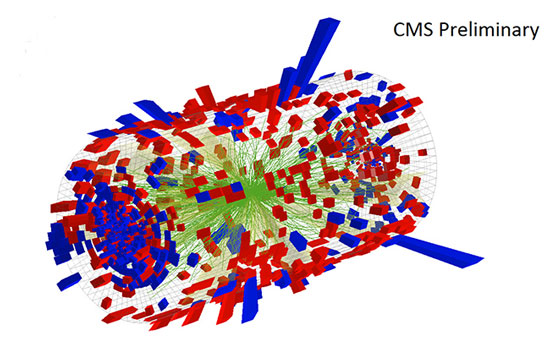 Scientists at the Large Hadron Collider, the world's most powerful particle accelerator, may have created the smallest drops of liquid made in the lab.
Scientists at the Large Hadron Collider, the world's most powerful particle accelerator, may have created the smallest drops of liquid made in the lab.
May 17th, 2013
Read more
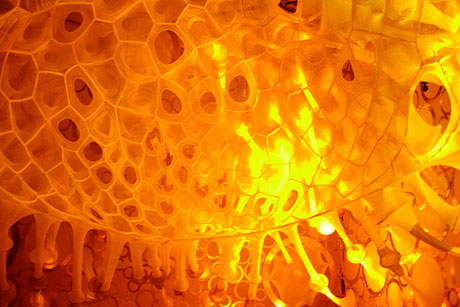 Cornell researchers Jenny Sabin, assistant professor of architecture, and Dan Luo, professor of biological and environmental engineering, are among the lead investigators on a new research project to produce 'buildable, bendable and biological materials' for a wide range of applications.
Cornell researchers Jenny Sabin, assistant professor of architecture, and Dan Luo, professor of biological and environmental engineering, are among the lead investigators on a new research project to produce 'buildable, bendable and biological materials' for a wide range of applications.
May 17th, 2013
Read more
Researchers at National Nanotechnology Center (NANOTEC) in Bangkok and Imperial College London (Department of Chemistry) in United Kingdom have studied the advancements of solid-state nanopores for the purpose of highlighting selected developments that will benefit scientists.
May 17th, 2013
Read more
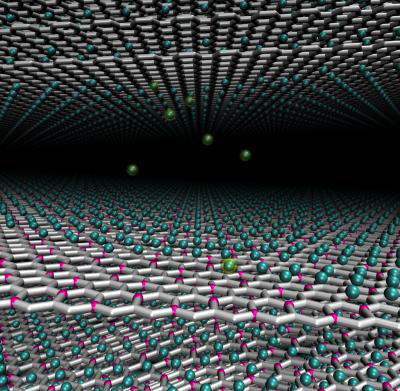 Calculations by the Rice lab of theoretical physicist Boris Yakobson found a graphene/boron anode should be able to hold a lot of lithium and perform at a proper voltage for use in lithium-ion batteries.
Calculations by the Rice lab of theoretical physicist Boris Yakobson found a graphene/boron anode should be able to hold a lot of lithium and perform at a proper voltage for use in lithium-ion batteries.
May 16th, 2013
Read more
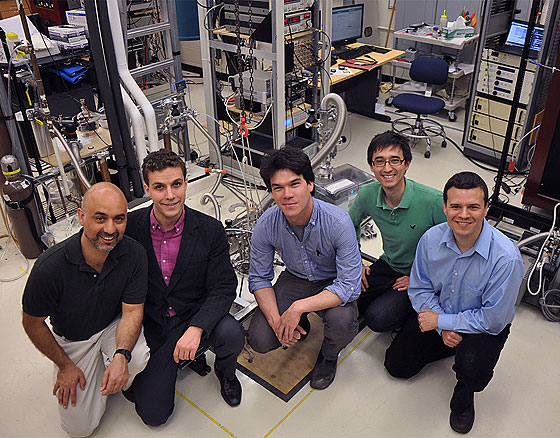 New experiments reveal previously unseen effects, could lead to new kinds of electronics and optical devices.
New experiments reveal previously unseen effects, could lead to new kinds of electronics and optical devices.
May 16th, 2013
Read more
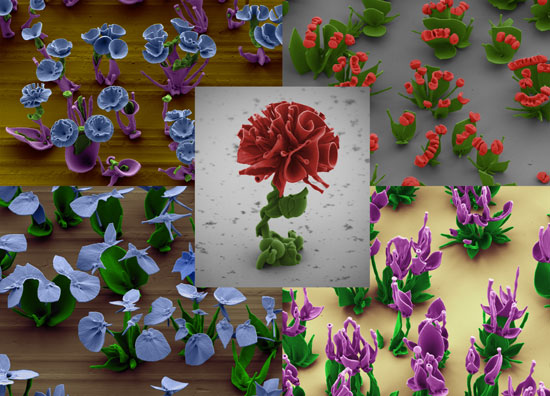 With the hand of nature trained on a beaker of chemical fluid, the most delicate flower structures have been formed in a Harvard laboratory - and not at the scale of inches, but microns.
With the hand of nature trained on a beaker of chemical fluid, the most delicate flower structures have been formed in a Harvard laboratory - and not at the scale of inches, but microns.
May 16th, 2013
Read more
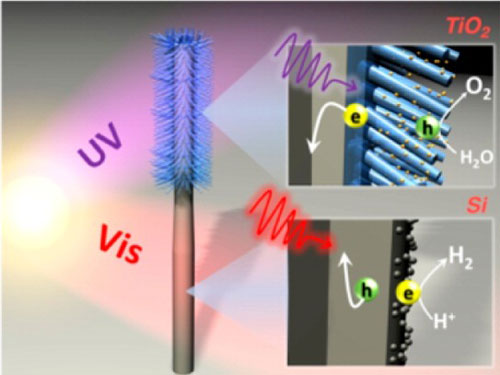 Scientists with the Lawrence Berkeley National Laboratory (Berkeley Lab) have reported the first fully integrated nanosystem for artificial photosynthesis. While 'artificial leaf' is the popular term for such a system, the key to this success was an 'artificial forest'.
Scientists with the Lawrence Berkeley National Laboratory (Berkeley Lab) have reported the first fully integrated nanosystem for artificial photosynthesis. While 'artificial leaf' is the popular term for such a system, the key to this success was an 'artificial forest'.
May 16th, 2013
Read more
Scientists have gained new insights into how materials transfer heat, which could lead eventually to smaller, more powerful electronic devices.
May 16th, 2013
Read more
 The interactive data-eyeglasses will be presented at the AWE 2013 - future application scenarios will be developed by the interdisciplinary project FAIR.
The interactive data-eyeglasses will be presented at the AWE 2013 - future application scenarios will be developed by the interdisciplinary project FAIR.
May 16th, 2013
Read more
 Researchers used a hydrogel to mimic the heart cells. They added carbon nan�otubes to the hydrogel, making it con�duc�tive, and then injected the mate�rial into the heart, where it solid�i�fies at body tem�per�a�ture.
Researchers used a hydrogel to mimic the heart cells. They added carbon nan�otubes to the hydrogel, making it con�duc�tive, and then injected the mate�rial into the heart, where it solid�i�fies at body tem�per�a�ture.
May 16th, 2013
Read more
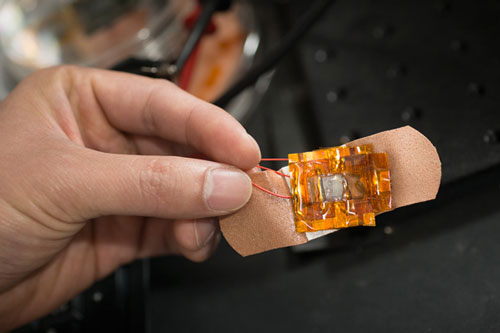 Engineers combine layers of flexible materials into pressure sensors to create a wearable heart monitor thinner than a dollar bill. The skin-like device could one day provide doctors with a safer way to check the condition of a patient's heart.
Engineers combine layers of flexible materials into pressure sensors to create a wearable heart monitor thinner than a dollar bill. The skin-like device could one day provide doctors with a safer way to check the condition of a patient's heart.
May 16th, 2013
Read more
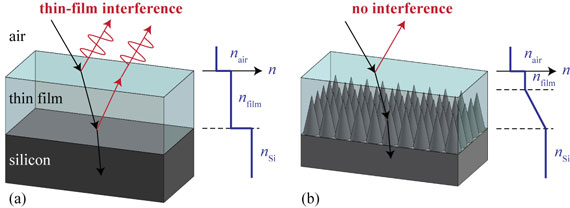 Inspired by the structure of moth eyes, researchers at North Carolina State University have developed nanostructures that limit reflection at the interfaces where two thin films meet, suppressing the "thin-film interference" phenomenon commonly observed in nature. This can potentially improve the efficiency of thin-film solar cells and other optoelectronic devices.
Inspired by the structure of moth eyes, researchers at North Carolina State University have developed nanostructures that limit reflection at the interfaces where two thin films meet, suppressing the "thin-film interference" phenomenon commonly observed in nature. This can potentially improve the efficiency of thin-film solar cells and other optoelectronic devices.
May 16th, 2013
Read more
Scientists have succeeded in growing a unique carbon structure at the nanoscale that resembles a tiny twirled moustache. Their method might lead the way to the formation of more complex nano-networks.
May 16th, 2013
Read more
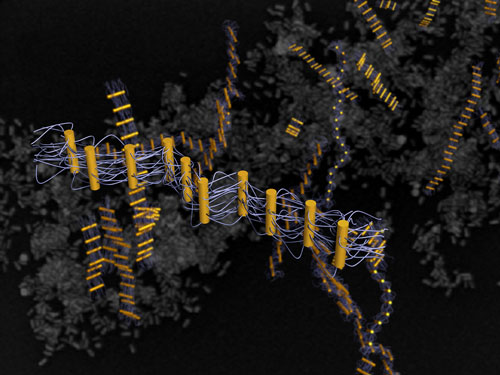 Approach could be useful in fabricating new kinds of materials with engineered properties.
Approach could be useful in fabricating new kinds of materials with engineered properties.
May 16th, 2013
Read more
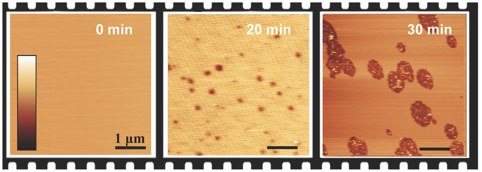 An international research team has used a combination of nanoscale imaging, computer simulation and de novo protein design to reveal a new mechanism of membrane disruption by antimicrobial peptides.
An international research team has used a combination of nanoscale imaging, computer simulation and de novo protein design to reveal a new mechanism of membrane disruption by antimicrobial peptides.
May 16th, 2013
Read more













 Subscribe to our Nanotechnology News feed
Subscribe to our Nanotechnology News feed